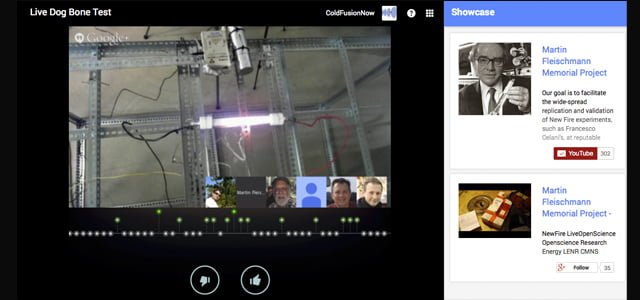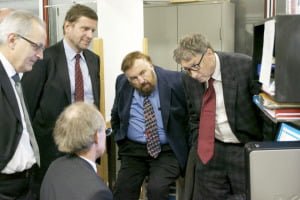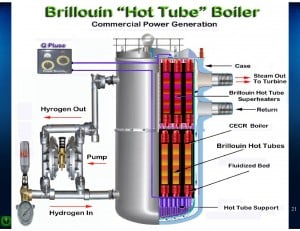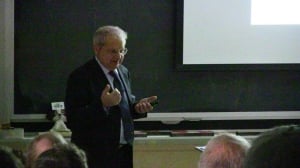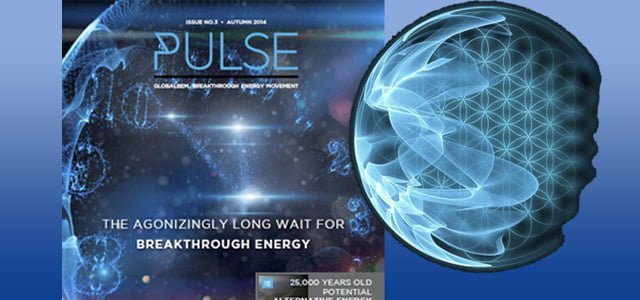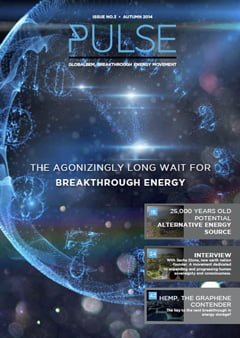Intro: You are listening to the Q-Niverse podcast. Let me just say, before we get started, that today’s episode is being brought to you in part by ColdFusionNow.org who helped facilitate the dialogue you are about to listen to. Today I have with me Andrea Rossi. Mr. Rossi is an inventor and entrepreneur who, for many years, has worked to develop the Energy Catalyzer, also known as the E-Cat – a reactor fueled by nickel and hydrogen that allegedly harnesses “cold fusion”, or low-energy nuclear reactions, on an industrial scale. Mr. Rossi has been working on this technology for well over a decade and has recently partnered with a highly-credible commercial investor to take the technology to the “next level”. A recent third-party analysis of the E-Cat, carried out by a coalition of European professors and engineers over the course of the past year, reports that the technology is in fact producing energy well in excess of any known chemical reaction. Andrea Rossi, thank you for being with me today.
Andrea Rossi: Thank you.
John Maguire: Starting off, can you explain your thoughts and feelings over the past year waiting for the new analysis of the E-Cat? Has this been a tense time for you, or have you been too busy refining the reactor to worry much about it?
Rossi: Basically I am focused on my work which is Research and Development, and direction of the manufacturing of the E-Cat and plant. This has been, as always, a period just of work. For what concerns the report – it is for sure an important report. [It] has been made by a third, independent party. The results are interesting, [and] very problematic, and we are studying these results.
JM: Now, were you worried at all that [analysis/report] might come up with negative results? Did you have any indication over the course of the year? Or were you pretty much in the dark like everyone else?
Rossi: This report is in the hands of the professors that made it.
JM: Sure…fair enough. What do you think the ultimate impact of the report will be? Can it possibly persuade the larger scientific community or other major industrial players beside ELFORSK to get interested in LENR generally speaking, in your opinion?
Rossi: This is difficult to say…this is difficult to say. Honestly, I do not know. But our target is not to convince anybody. Our target is to make a plant that works properly. Now we have finished [with all the tests] and we are focusing exclusively on the market and on the production that we have to set up. This report is no doubt very interesting and we are studying it because, as you probably know, there is a surprising result regarding the Nickel-62 in particular, and we are studying it because we are strongly directed, under a theoretical point of view, to understand these kinds of results that was unexpected. But our main focus remains the operation of industrial plant.
JM: Now you mentioned theory there real quick, so maybe we can talk about that really quick. Do you think that the reaction can be explained within the Standard Model or do you think we’re gonna have to go well beyond that to account for what’s going on, because as you noted there were some strange changes in the powder – which we don’t really have time to get into too much – but can you put it in a theoretical context, or do you any ideas theory wise that you’re able to share?
Rossi: No, we are starting on it. It will take time because the reconciliation is not an easy task. And we are studying with specialists.
JM: You’re working with a team to develop the theory, is that the idea?
Rossi: Yes.
JM: Now getting back to the report. In regards to excess heat, the measured coefficient-of-performance, or COP, came out to be around 3.2-3.6 over a very prolonged period of time. Some experts argue the calorimetry was suitable, while others remain unsatisfied for various reasons. So first, what did you make of the review group’s methodology and excess heat measurements?
Rossi: Well the calculations have been made by the professors. I know that some of them are very well [experienced with] that kind of measurement. They have also [made a core] with manufacturer of thermal chambers. I suppose they know what they did. I want not to enter into this question because I just accept the results [I have been given]. I have nothing to comment about that. About the various opinions [out there] we do not consider them real [objections] because what’s of interest to us, again, is that the plant we have in operation works properly. Honestly we have no more time to lose in this discussion. [Concerning] the COP – you have seen in the report the COP has been calculated in a very conservative way. Every number has been calculated [within] the most conservative margin. Actually, I think [the COP] could be maybe increased but again, this is not a theoretical issue, this is a technological issue that can be seen only at a fixed point in an industrial, operational plant — no more theoretical suppositions.
JM: The new version of the E-Cat that was tested this time had an alumina casing on it. Now this as far as my understanding goes acted as an insulator…
Rossi: It has been described in the report. I don’t want to say anything about that. The report has been very well described [elsewhere] – the casing of the reactor.
JM: You brought up the 1MW plant – how is progress going on that? And to be more specific how is the new design superior to the old version, and how long do you think it will take to get to market or, at the very least, be demonstrated publically for people?
Rossi: Well, yes, the new 1MW plant has gotten a strong evolution with [regard] to the older one — mainly under the reliability point of view; under the industrial point of view. The control system is enormously more sophisticated. Basically the plant is governed by a robot. Nevertheless it will take at least one year of operation in the factory of the customer of Industrial Heat, to whom the plant has been supplied…it will take at least one year before they complete the analysis [and] all possible errors have been adjusted. After this year with the permission of the customer, because industry is not a showroom or a theatre, so we cannot just open access to the public and say, “Alright guys, come and see!” It will not be that simple, but selected visits for a person who has title to that will be open – [but] not before we consider the plant absolutely [finished] under an industrial point of view. I suppose it will take about one year…about one year from now I suppose. But when you are in this field you cannot be sure about the scheduling because you can be sure of one thing now today, and tomorrow discover you were wrong and have to change something. This is the first time – and this is important to underline – this is the first time we had the possibility to see in operation 24-hours-a-day continuously the plant because before we could only operate on it for a couple of days or three before [we encountered] a lot of problems. The [past manufacturing facilities that we installed the old 1MW plant were not in full operations]. There was not a load to supply all the energy to. So now in the real industrial operation/situation we can see all the problems that are generated from this real operation.
JM: Now you say you’ve seen it running longer than a few days can you give some idea of how long one has been running, or how long one has been tested for? Are we talking weeks?
Rossi: You know in our factory the one megawatt plant that had been presented in October 2012 — it worked at that time. Then, we could work with it for some [amount of time], but you cannot put in exercise for long a plant like that if you don’t have a real load and if you do not have a real operation going on.
JM: Can you give us an idea of how many people are working to develop the E-Cat? Obviously you have your hands on it in some capacity, but is this a rather large team or just a small group of engineers?
Rossi: We are working with a complex team where there are specialists for any issue.
JM: Can you give an idea of how many scientists are working on [the project]?
Rossi: I prefer to not answer in detail, but what I can say is that for any single matter, we have a specialist to take care of [that].
JM: Getting a bit more personal, I’m sure people are wondering what exactly has driven you all these years, and what do you hope to ultimately achieve by bringing this technology to the world? How do you hope to be remembered?
Rossi: The first stone has been put in the building so, you know, the first industrial plant, not working in an experimental warehouse, but working in the factory of a customer to produce a profit is already in operation. So this process of industrialization has begun already.
JM: What do you hope to accomplish personally? What drives you to keep pushing this forward?
Rossi: Well, you know, I just go one step at a time. My biggest aspiration now is to make the 1 MW plant perfect, absolutely and totally reliable, with all the defects corrected. This is my aspiration now. After this, I do not know.
JM: Briefly, can you speak on your past work with the now-deceased Professor Sergio Focardi of the University of Bologna. I think he might be one of the unsung heroes after the story is told, along with many others of course, but he was one of the pioneers in the nickel-hydrogen work, along with [Francesco] Piantelli and others, most notably Italians. How significant in your opinion were his contributions to the genesis of the E-Cat, your work, and just your general thoughts on him?
Rossi: Focardi has been a strong collaborator with me, mainly in the period between 2007 and 2010. I have been lucky to be helped by him with his strong theoretical preparation. For sure, he has contributed to the development of this work, and we absolutely have to be grateful forever for his precious contribution and he is always present in our memory.
JM: I know he was in a special situation in one sense because he was retired, and though his career wasn’t behind him, he could come out and support controversial work that he might not have been able to do while he was still a teaching professor, and that’s the kind of pressure many academics face in dealing with these new technologies or this new science. And so, we need people like Sergio Focardi, we need people like Hano Essen, like Sven Kullander, who are willing to stick their necks out for new science to discover something new. Without pioneers, without people taking these kind of risks, both economic on your end, and sociologically, say in the scientific community, on the professors’ end. So I wish people were more open-minded [and] would follow their example. I think a lot of the barriers to people understanding this new technology, this new science, is again the academic pushback, so I am always encouraged by these men of integrity, whether they are sure or unsure of what’s going on, they say, “let’s look”, “let’s investigate”. That’s why I’m always in inspired by those kinds of people, and that’s why I brought him up.
Rossi: Yes, I agree with you.
JM: I know you don’t have a lot of time today. We appreciate all the time you afforded to us. I know there are things you can talk about, and things you cannot talk about. So before we go our separate ways, do you have any parting thoughts? Any words of wisdom or anything you think is appropriate?
Rossi: What I can say is that, at this point, we have to focus on the industrial plant in operation, because at this point in the story we are in a situation similar to the one at the dawn of the computers. At the very beginning it was important to have the theoretical discussion on microchips, etcetera, but at a certain point, the development, and the importance of the computer, has been determined by the market, not by the scientific community.
JM: Absolutely. Thank you for taking the time out of your very busy schedule to speak to us.
Rossi: Thank you very much. It has been a pleasure and an honor to be with you today.
Conclusion: That does it for today’s episode. Thanks again to Andrea Rossi, Ruby Carat at Cold Fusion Now.org, and thanks to you for listening. Take care, and stay tuned for more episodes in the near future.
* More of Interviews/Essays on Cold Fusion/LENR & other topics can be found at Q-Niverse.
 Photo: Reaction chamber in operation. Note that the true light color was orange. Courtesy Jack Cole.
Photo: Reaction chamber in operation. Note that the true light color was orange. Courtesy Jack Cole.


